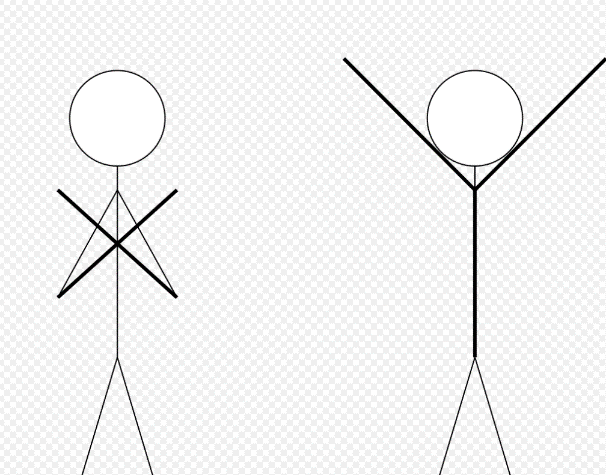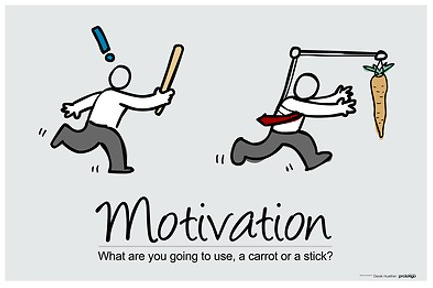Theory X&Y
Contents |
Abstract
To achieve a company's objectives, knowing its employees is important and knowing how to get them involved in project management is even more important.
The social psychologist Douglas McGregor developed two diametrically opposed theories about how to manage employees in professional life. These two theories are still used today in the fields of organizational behaviour, organizational communication, human resource management, project management and organizational development. His theory is thus exposed in "The Human Side of Enterprise" published in 1960 [1]
First of all, Theory X is the theory with a rather pessimistic view of people, which states that people do not like their work and that they are not motivated. Theory Y brings a more optimistic vision for which people are really motivated because they enjoy their work.
Each of these theories requires a different type of management in order to get the most out of employees and this is what you will discover in this article.
The Big Idea
McGregor argues that there are two identifiable categories of workers in the world of work. He also believes that managers' beliefs influence the organization and efficiency of a company.
.The first theory, Theory X, argues that people are naturally unmotivated to work. Thus, the way to motivate us is the "carrot and stick" with a reward system and by pushing remuneration. People in this category therefore need to be controlled, supervised and avoid responsibility as much as possible. This category often lacks ambition and is oriented towards individual success.
In a second step, theory Y argues that people are really motivated because they enjoy their work and a reward system is not necessary in their case. The work atmosphere is therefore considered healthier with people in this category who generally have a better relationship with their boss.
Theory X
How to recognize them ?
Theory X is mainly based on 3 hypotheses:
- The average person does not like to work and will tend to try to avoid it as much as possible.
- This aversion to work in human beings means that they have to be directed and controlled or even threatened in order for them to invest enough effort to achieve the objective set by the company.
- These people therefore tend to want to be directed themselves. They will try to seek security by trying to avoid responsibility, which translates into a lack or absence of ambition.
Thus, managers with employees, who they believe fit into Theory X, will think that these employees are lazier and less intelligent than average. Instead, these managers will be tempted to use a reward/punishment system as a motivation to manage employees they think are working solely for their own benefit. This is generally referred to as the "carrot-and-stick" technique. However, this technique will not work if the needs of employees are mostly social and egoistic.
How to manage them ?
In his book, McGregor argues that two different managerial styles are possible for managing employees entering the X theory:
According to him, the first method is the hard method. This method consists of a permanent presence of managers, sometimes using intimidation and a system of punishment to achieve results. Logically, this managerial method creates an atmosphere not very conducive to personal development, which only pushes the employee into the box of theory X. It is therefore not uncommon to see the employee's aversion to his manager grow. The manager's lack of trust thus leads to a clear separation of the two parties involved, who thus find themselves in opposition rather than collaboration. The work atmosphere is therefore unhealthy and can thus degrade relations within the company to the point of demotivation of other employees who are more inclined to work in normal times.
In contrast to the hard method, the second method is called the soft method by McGregor. Managers using this method are generally less strict in trying to get results from employees. Thus, they will try to create a creative and more cooperative atmosphere within the company, both between employees and between the different hierarchical levels. Of course, this method is a double-edged sword because an absence of strict rules can have the opposite effect for employees who are completely within the scope of X theory. They will thus tend to take advantage of this situation to work as little as possible while maintaining their comfort level.
With hindsight, it is possible to see that the most effective method for employees who are part of Theory X is somewhere between the soft method and the hard method. An intermediate method that could promote employee self-employment while remaining close to the employees, or even keeping the spectre of possible punishments and rewards in mind.
It is thus possible to see that having Theory X employees is not ideal, but it may nevertheless be useful for certain occupations. Indeed, working in factories, with production lines for example, is rather suitable for employees in this category.
Theory Y
How to recognize them?
As with theory X, theory Y is based on several hypotheses:
- The average employee does not dislike working by nature. Under certain conditions, they find it a source of satisfaction.
- If the right conditions are met, the average employee will not only accept but seek responsibility. It is possible, however, that a lack of ambition and a need to avoid responsibility may appear in this employee. If this is the case, it stems from his or her experience rather than from the way he or she operates.
- Ingenuity and creativity in solving a company's problems are qualities that are omnipresent in the population.
- There is no need to control, direct or even threaten to achieve results with these employees. Indeed, they will self-direct themselves to achieve the results they are asked to achieve. The pleasure of working and feeling useful is for them a sufficient reward for their work.
- Employees concerned by theory Y will seek to have a good relationship with their manager. Managers adapted to theory Y will succeed in creating a better work atmosphere by linking the employees' personal goals with the company's objectives.
Thus, managers with employees in category Y will tend to be less willing to supervise them. They will think that employees are more creative or even intelligent [2]
How to manage them?
It is therefore observable that employees in theory Y do not require as much supervision as those in theory X. In fact, a less strict environment based on personal development will encourage their creativity and allow them to achieve better results. However, the total absence of supervision may have the opposite effect to that expected, by leaving the employee to fend for himself or herself. The employee may thus have a tendency to get lost in his work if he is not guided.
This model is associated with the MBO model, Peter DRUCKER's management by objectives in 1954, of which it is the continuity [3]. The main idea behind it is that it is easier to motivate employees when one evokes with them the notion of an objective to be achieved rather than assigning executive tasks to them in a directive manner. The general objectives are multiplied into as many partial objectives as there are operational units and are all aligned in the same direction. Later in the 1970s the concept evolved into PMBO Participatory Management by Objectives. In practice, PMBO implies that the organization is structured by autonomous departments, where each department manages its project independently. Often, PMBO is concerned with the achievement of short-term objectives (tactical or operational in nature).
Theories X and Y in the Workplace
McGregor's X and Y theory has changed the view of work and the way of thinking of many managers who previously viewed employees in Taylor's scientific way. Taylor believed that making people work as hard as possible was less effective than optimizing the work they had to do. Now the vision is more focused on individuals. Theory Y, however, has often been considered too idealistic by its critics.
More recent studies indicate that there is no single possible approach to managing employees and that it depends primarily on the nature of the work that needs to be done. Indeed, in a company where the tasks to be carried out are rather precise and rather simple, a management with clear procedures and a classical hierarchy correctly defined is the most adapted. We thus find a managerial system quite close to the functioning of theory X. On the other hand, a company whose objectives are uncertain and which requires creativity and ingenuity when approaching problem solving will tend to benefit from a work environment that is less formal, less controlled and leaves more room for personal initiative by integrating the employee into the decision-making process. It is therefore imperative for a company to define the managerial style that suits the company's needs.
Limitations
Although Theory Y seems to be the most beneficial theory for companies, it has certain limitations and is therefore not a symbol of the model employee. In "The Human Side of Enterprise", McGregor thus tries to persuade managers to stop limiting employees to the image of theory X by trying to adopt the managerial style specific to theory Y.
Theory Y thus has some limitations. Indeed, this theory can often lead to errors in terms of consistency and uniformity [4]. As a result, the workplace may lack rules and guidelines, which can negatively affect the quality standard demanded by the company and customers. A Z theory has appeared more recently and is based on the Japanese management style. Employees are described as loyal and eager to improve their teamwork. In this companies, collectivism and stability are preferred to individualism. [5] Thus, Japanese Z-theory companies are opposed to western companies by:
| Japanese companies | Western companies |
|---|---|
| Lifetime employment | Time-limited employment |
| Non-Specialized careers | Specialized careers |
| Implicit control mechanisms | Explicit control mechanisms |
| Slow evolution and promotion | Rapid evolution and promotion |
| Overall interest | Limited interest |
| Collective responsability | Individual responsibility |
| Collective decision making | Individual decision making |
Theory Z provides more reliability based on attitudes and employee responsibilities, whereas MacGregor's XY theory is essentially focused on management and motivation of the perspectives of managers and the organization. Z-type companies are characterized by participatory decision-making resulting in consensus. This decision-making by consensus privileges information while showing the attachment of the company to its values.
In addition, McGregor stipulates that other variables must be taken into account when choosing a managerial style. Indeed, it is easy to observe that many constraints are not taken into account when studying the X and Y theory. For example, the social, economic or even political context can influence employees' desire to work, just as the desire to follow others. Thus, he argues that the ability to lead a team and the capacity to work is not a fixed characteristic for each individual, but rather a complex combination of all these variables. He thus concludes that leadership is rather situational and depends on the leader and the situation he is facing.
Finally, employees cannot be locked in a specific box. Their attitude at work and their relationship with others depends on many factors that change over time. Therefore, the managerial system must be flexible in order to combine personal needs with the company's needs to the maximum extent possible and thus achieve satisfactory results for everyone.
References
- ↑ Douglas McGregor, "The Human Side of Enterprise" (New York, McGraw-Hill Book Company, Inc., 1960), pp. 34–35 and pp. 47–48.
- ↑ John J. Morse and Jay W. Lorsch, "Beyond Theory Y"
- ↑ Adam Hayes, "Management by objectives (MBO)"
- ↑ Carson Charles, "A historical view of Douglas McGregor's Theory Y"
- ↑ William G Ouchi Reading, "Theory Z: How American business can meet the Japanese challenge?"

